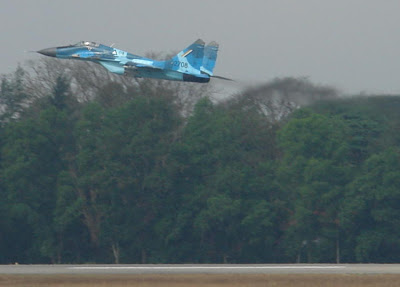At the four-monthly meeting of Burma's top generals held in Naypyidaw during the last week of May, the junta significantly increased its military budget from last year, according to sources close to the Burmese military.
A military source told The Irrawaddy on Thursday that although the amount budgeted to the military is unavailable, it is known to be much larger than last year's military budget.
“The money allocated to the military was budgeted under the heading 'Defense Budget', but there was no specific line items for separate expenses,” he said.
The military source added, however, that it is generally believed that large military equipment purchases will be made within the next six months.
In 2009, Burma signed a contract with Russia for the purchase of 20 MiG-29 jet fighters at a cost of nearly US $570 million.
Analysts believe that many of Burma's future military purchases may come from North Korea.
According to a report by UN experts obtained by The Associated Press last month, North Korea is exporting nuclear and ballistic missile technology and using multiple intermediaries, shell companies and overseas criminal networks to circumvent UN sanctions.
The UN's seven-member panel monitoring the implementation of sanctions against North Korea said its research indicates that Pyongyang is involved in banned nuclear and ballistic activities in Iran, Syria and Burma.
In November 2008, Gen Thura Shwe Mann, the regime’s No 3 ranking general, made a secret visit to North Korea and signed a memorandum of understanding, officially formalizing military cooperation between Burma and North Korea with his North Korean counterpart, Gen Kim Kyok-sik.
During his trip to Pyongyang, Shwe Mann also visited sites of secret tunnel complexes built into the sides of mountains to store and shield jet aircraft, missiles, tanks and nuclear and chemical weapons.
In addition, according to Burmese Maj Sai Thein Win, a former deputy commander of a top-secret military factory who defected and brought with him top secret documents and photographs about Burma's nuclear projects, secret underground bunkers and tunnels have been built at many locations in Burma.
Sai Thein Win, who was trained in Burma as a defense engineer and later in Russia as a missile expert, said that about 10,000 Burmese officials have been sent to Russia thus far to study military technology, including nuclear technology.
Sai Thein Win also said in a report that Burma is trying to build medium-range missiles such as SCUDs under a memorandum of understanding with North Korea. “Burma wants to have rockets and nuclear warheads. Burma wants to be a nuclear power,” Sai Thein Win said.
One reason the regime is able to increase its military budget and import expensive military equipment and technology may be its expected increase in energy revenues.
A study by the Washington-based United States Institute of Peace said that Burma's export earnings from the country's growing energy sector will double in the next five years, due mainly to oil and gas transit pipelines now being built from Burma to China. The Institute said the calculation is based on energy exports—mostly gas—accounting for at least 45 percent of the $6.6 billion earnings declared by Burmese interests in 2008.
Burma's military regime is infamous for spending a large percentage of its national budget on the military, rather than on education, health and other public services. According to Burma military experts, 40 to 60 percent of the national budget is allocated to the military.
In contrast, 0.4 percent of the national budget is spent on healthcare, while 0.5 percent is spent for education, according to a report released in 2007 by the International Institute for Strategic Studies, a think-tank based in London.
In other news regarding the four-monthly meeting, according to military sources there was no major military reshuffle in Naypyidaw.
 MiG-29 of the Myanmar Air Force (photo : Airliners)
MiG-29 of the Myanmar Air Force (photo : Airliners)









